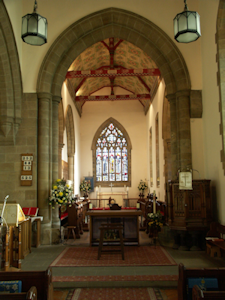England's Past for Everyone: Historic Environment Research
Matthew Bristow, 2012. https://doi.org/10.5284/1000416. How to cite using this DOI
Data copyright © University of London unless otherwise stated
This work is licensed under the ADS Terms of Use and Access.
Primary contact
Matthew
Bristow
Historic Environment Research Manager
Institute of Historical Research
University of London
Senate House
Malet Street
London
WC1E 7HU
England
Tel: 020 7664 4899
Fax: 020 7862 8749
Resource identifiers
- ADS Collection: 1001
- DOI:https://doi.org/10.5284/1000416
- How to cite using this DOI
Downloads
Sunderland, County Durham

The Durham project focused on the city of Sunderland, utilising staff seconded from the University of Sunderland history department and resulted in two companion publications - the first tracing the origins of Sunderland from prehistory to the formation of the parish of Sunderland in 1719, and the second charting the physical development of the town in the post-medieval period, culminating in Sunderland's successful quest for city status in the late 20th century.
During the research for the first publication, Sunderland and its Origins: Monks to Mariners architectural consultant Peter Ryder produced interpretive surveys of the parish churches of St Peter (Monkwearmouth), St Michael and All Angels (Bishopwearmouth) and Holy Trinity (Sunderland), in addition to an introductory survey of Hylton Castle and the associated chapel of St Katherine.
Overlapping chronologically with the origins volume, Sunderland: Building a City focused on topography, the physical environment and how a collection of disparate medieval villages spread across two ancient parishes, grew to form the modern city of Sunderland. Architectural historians Michael Johnson and Graham Potts were commissioned to produce an analysis of the buildings and architects which shaped Sunderland during the 18th and 19th centuries, which in turn led to a secondary project in which Michael Johnson produced a report on the Sunderland Cottage housing type.
Publications
SUNDERLAND AND ITS ORIGINS: MONKS TO MARINERS by Maureen M Meikle, Christine M Newman. Phillimore & Co. Ltd. ISBN 978-1-86077-479-9
SUNDERLAND: BUILDING A CITY Gillian Cookson. Phillimore & Co. Ltd. ISBN 978-1-86077-547-5






